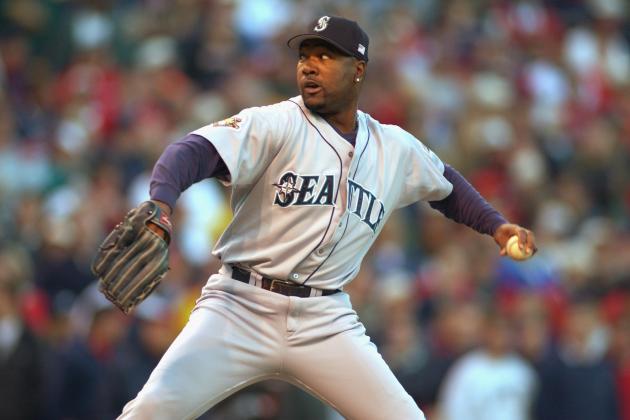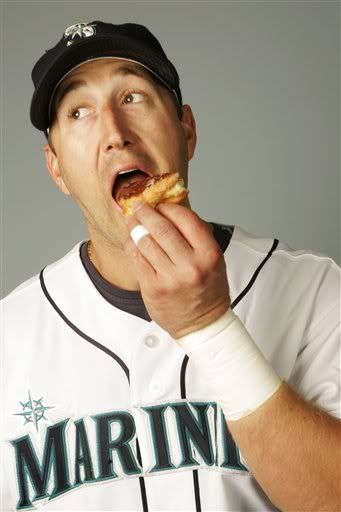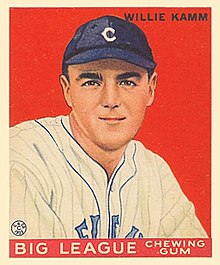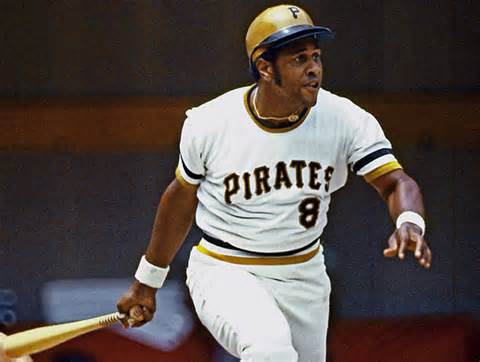1. Matt Boyd wins 12+ games
The Tigers announced today that Anibal Sanchez will start the season out in the bullpen, giving Matt Boyd the 5th starter spot in the rotation. Boyd will look to build off of his very solid second half last year, and the Tigers offense should give him a realistic shot at double digit wins. I'd expect something like 13-7 with an ERA around 4.00 if he stays in the rotation all season.
2. Ben Revere steals 30+ bases
This is based primarily on the fact that Cameron Maybin is wildly injury prone, and any time he misses will give Revere more chances get on base, and to steal. He only hit .217 last year, but with a spectacularly low .238 BABIP, nearly 100 points lower than his career average. Assuming that regresses, Revere should hit closer to .280 or so, and with regular at-bats should be a lock to steal 30 this year.
3. Keon Broxton finishes 20/20
Broxton hit 9 home runs with 23 steals in only 75 games last year, so it's hardly crazy to predict 20 steals again, and 11 more home runs seems feasible as well. Broxton is still very young, but he struck out in 36% of his at-bats last year. If he can limit that, he has the tools to be a 20/20 guy not just next year, but for many years to come.
4. Kevin Kiermaier finishes with a WAR above 8.0
Going off of baseball-reference, Kiermaier put up a 7.3 WAR in 2015 in a full season, and a 5.5 WAR in only 105 games last year. Kiermaier's 7.3 WAR season came with an OBP less than .300 and an OPS+ of only 99, so assuming he even becomes a slightly above average hitter, Kiermaier should accrue a WAR over 8. His high WAR comes from his spectacular CF defense primarily, but I wouldn't be surprised to see Kiermaier with 15+ home runs and 25+ steals this season as well.
5. Adrian Beltre passes Dave Winfield in home runs and hits
Beltre needs 20 home runs and 168 hits to tie Dave Winfield in those categories. Over his last four years Beltre has averaged 179 hits and 25 home runs. So if he can stay healthy, I think both those numbers are not only attainable, but likely. The question is health, but Beltre has managed to avoid lengthy DL stints throughout his career, so I'm confident he can do so for one more year.
6. Nolan Arenado is the NL MVP
Arenado should build off his incredible 41 home run, 133 RBI season last year. He's still only 25, and I believe will continue to be one of the best players in baseball for years to come.
7. Mookie Betts is the AL MVP
Betts will have to beat out Mike Trout and Jose Altuve, but as a player capable of a 30/30 season who plays great defense and scores tons of runs, I'll take my chances on him finishing the season with some hardware.
8. Marcus Stroman finishes top-5 in Cy Young voting
Marcus Stroman had a really bad first half last season. But he was much better in the second half. After a dominating performance in the WBC, I'm inclined to believe that Stroman is more like the pitcher he was in his first 1.5 years (and second half last year) than the pitcher he was early in 2016. If he can return to that form, he's a top 5 pitcher in the American League.
9. The Red Sox don't have a top-10 rotation in the league
Chris Sale goes from a pitcher friendly park to Fenway, and has to deal with the Boston media. Considering his already frail emotional state, that seems troublesome to me. Price is hurt and may not be the same pitcher we are used to seeing. Porcello's numbers were a lot better than he was last year, and he will absolutely regress back to his normal, high 3.00 ERA self. E-Rod and Pomeranz are fine capable back-end starters, nothing more. Steven Wright is an inconsistent knuckleballer. I don't have a lot of faith in this rotation, especially with most of their games in the AL East.
10. Greg Bird hits more home runs than both Matt Holliday and Cris Carter
Not combined, although that would be epic. I think Holliday and Carter form a semi-platoon at DH and Bird gets the vast majority of the at-bats at 1B, with Carter occasionally filling in for him. I think Bird will hit around 25 home runs this year, with the potential for 30. Holliday will get his 20 or so, but I doubt much more. And Carter's playing time will severely limit him. Barring injuries, Bird is the guy you want out of this 1B/DH situation in NY.
11. Hanley Ramirez has 30/100 with 10 steals
Hitting fourth in the line-up will be great for Hanley, and switching to a full-time DH (which appears likely) will help him stay healthy and productive all season long. A healthy Hanley put up 30 home runs, 111 RBI and 9 steals last year, so a repeat performance hardly seems outrageous, providing health and that he runs enough to grab double digit bags.
12. AL play-off teams: Rangers, Indians, Red Sox: Astros and Yankees
Nothing too crazy here. Astros are a bit of a stretch because their pitching is so unpredictable, but I think if they put it together they can challenge for that wild card spot with ease. Mariners and Tigers, my two teams, are on the outside looking in yet again this year.
13. NL play-off teams: Dodgers, Cubs, Nationals: Giants and Mets
Picking only one NL Central team feels weird, but I don't see the Cardinals or Pirates being better than either the Mets or Giants this year. Depends on health for NYM, but if they can stay healthy they should squeak into that wildcard spot.
14. World Series: Rangers vs. Cubs
Rangers pitching is concerning behind Hamels and Darvish, but if they are hitting well I could see them pulling off a trade for another arm (Quintana maybe?) and making a run. Their farm system is already pretty rough after the Lucroy trade, so they may have to get creative, but I think this is their last chance, so I think they'll go all in.
Cubs are basically an all-star team, and with Maddon as their manager I think they'll be back in the WS again.
15. Cubs don't want to wait another 108 years for this one, win again. Become hated
I should say become more hated. People love an underdog, until they aren't. The fact that I'm a Gonzaga fan/alum is certainly not factored into that statement.










































